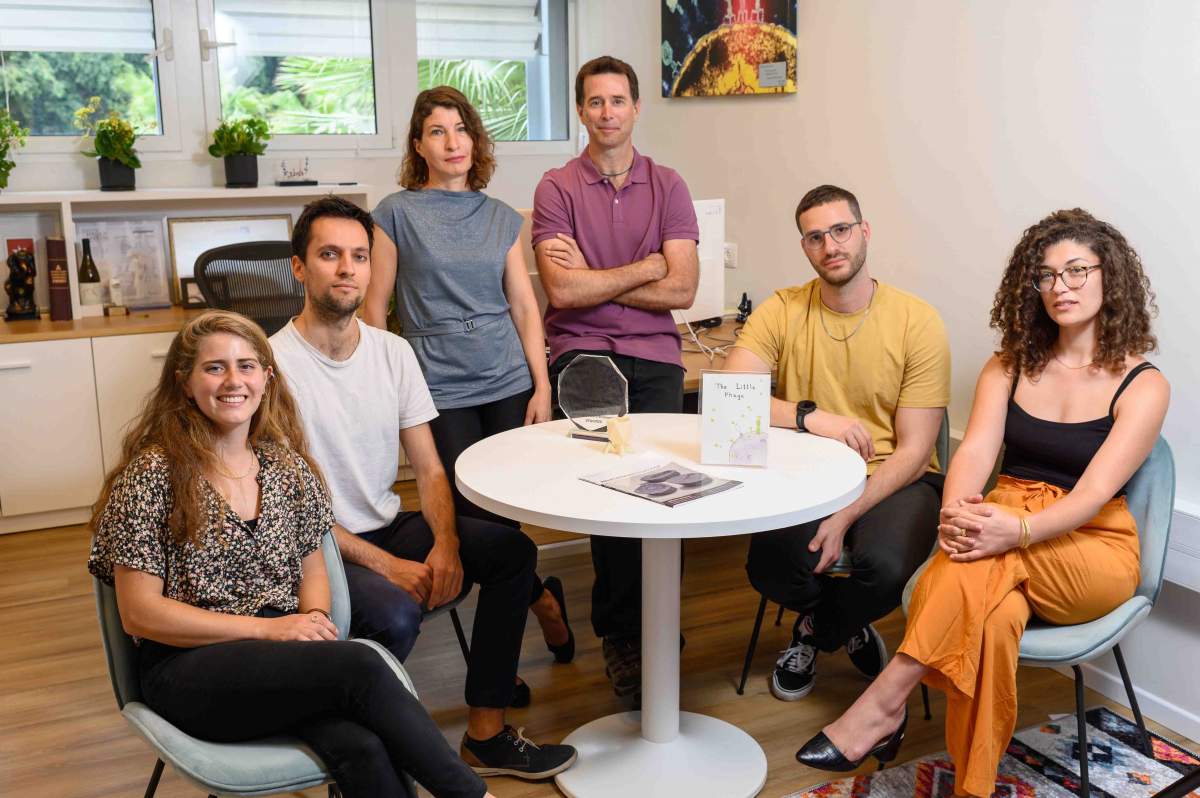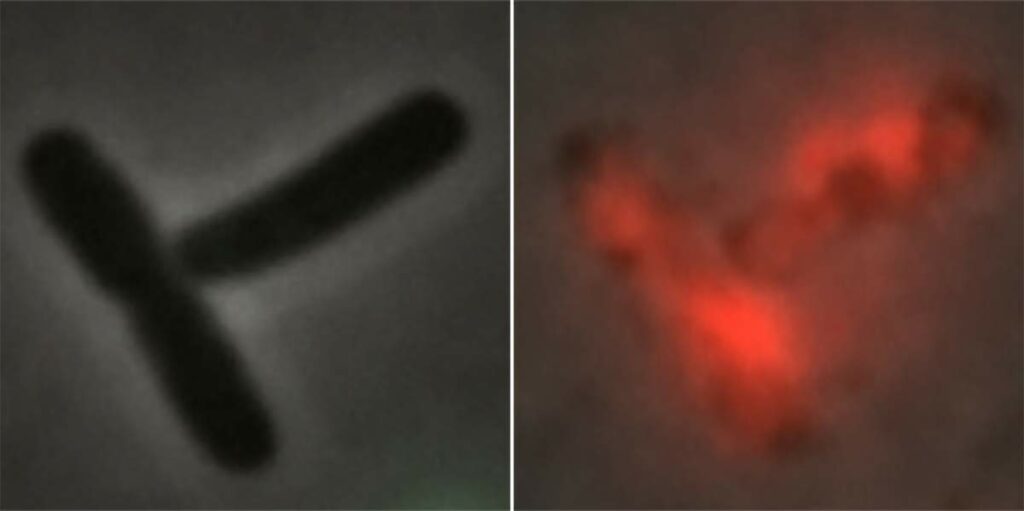
August 18, 2023
A newly discovered immune strategy by researchers at the Weizmann Institute of Science protects bacteria and more advanced species, from corals to bees.
Every time we make a call, send a text message or watch a video, some of the energy stored in the cell phone’s lithium battery is depleted. Living cells also store energy in ‘currencies’ they can cash in when needed, in order to fuel life processes. The main energy currency of all living things on Earth – like the lithium batteries – is a molecule known as ATP. But even though charging cells with ATP molecules is of vital importance, it has now been discovered that discharging them could be no less crucial and even lifesaving.
In a study just published in Cell, the Weizmann researchers described a new family of proteins that deplete cells of their energy, thereby protecting the cells from invaders. The scientists showed that this previously unknown immune mechanism does not exist only in single-celled organisms. It has been preserved through more than a billion years of evolution and is used by many living creatures, from corals to bees.
The newly revealed strategy is the latest of more than 100 recently discovered sophisticated mechanisms used by bacteria in their heroic battle against phages, the viruses that attack bacteria. Many of these mechanisms were discovered and described in the laboratory of Professor Rotem Sorek of Weizmann’s Molecular Genetics Department.
Just like the viruses that attack us, phages are also made up of a small quantity of proteins and a lot of genetic material – DNA or RNA – which they inject into the bacteria they are taking over. Having accomplished this task, these viruses use the bacteria’s cellular machinery to replicate themselves over and over. When they have depleted a single bacterium’s resources, they tear down its membrane, break out and spread throughout the entire bacterial colony.
In their study the researchers focused on a gene that had caught their attention – one that had mysteriously nullified a phage’s ability to replicate itself and infect the rest of the colony. The scientists revealed that the mystery gene encodes a protein that cuts up and permanently destroys ATP molecules, thereby denying the invasive phage the energy it needs to reproduce itself. The result is an effective immune strategy. The researchers deduced that the gene plays a key role in bacterial immune systems: In its absence, phages that infected the bacteria replicated 100 times faster.
“Lowering the levels of ATP in the cell is a strategy that’s brilliant in its simplicity,” said Dr François Rousset, who led the research team in Sorek’s lab.
“The phage cannot replicate without energy, and it is better for the bacterium, which in any case is infected and about to die, to deplete its own battery, preventing the phage from replicating and spreading to the rest of the colony.”
The researchers also discovered that in some cases, depleting ATP affects the phage’s control systems, causing it to breach the bacterial cell’s membrane too soon, before it has had a chance to replicate. This prevents much more widespread damage to the colony.
Rather surprisingly, this strategy is much more common than one would imagine. The scientists scanned genome databases of tens of thousands of bacteria and discovered more than 1,000 immune genes that work in a similar way. Moreover, they were surprised to find ATP-depleting capabilities in one family of proteins that, until now, was not even known to belong to the immune system. This suggests that the researchers have discovered a new immune strategy that exists in hundreds of different bacteria and grants them effective protection against viruses.
The study did not, however, stop at bacteria. The scientists carried out a comprehensive analysis showing that far more advanced organisms – fungi, insects such as bees, corals, sponges and many other organisms – also produce immune ATP-cutting proteins. Although this type of immune protein does not exist in humans, the researchers believe it is the ancient predecessor of the proteins that make up our innate immune systems.
“Many studies in the past few years have used the knowledge of advanced organisms’ immune systems to reveal immune strategies used by bacteria,” said Sorek.
“Our new study shows that the extensive knowledge accumulated about bacterial immune systems enables us to follow the opposite logic – we can learn about the immune systems of advanced organisms by studying those of bacteria. ATP molecules are among the most widely occurring in nature, so clarifying their role in immunity can greatly contribute to understanding the defence strategies that countless organisms use when attacked by viruses.”
Also participating in the study were Erez Yirmiya, Shahar Nesher, Dr Adi Millman and Sarah Melamed from Weizmann’s Molecular Genetics Department; and Dr Alexander Brandis, Tevie Mehlman, Dr Sergey Malitsky and Dr Maxim Itkin from Weizmann’s Life Sciences Core Facilities Department.

(l-r) Shahar Nesher, Dr François Rousset, Sarah Melamed, Professor Rotem Sorek, Erez Yirmiya and Dr Adi Millman







